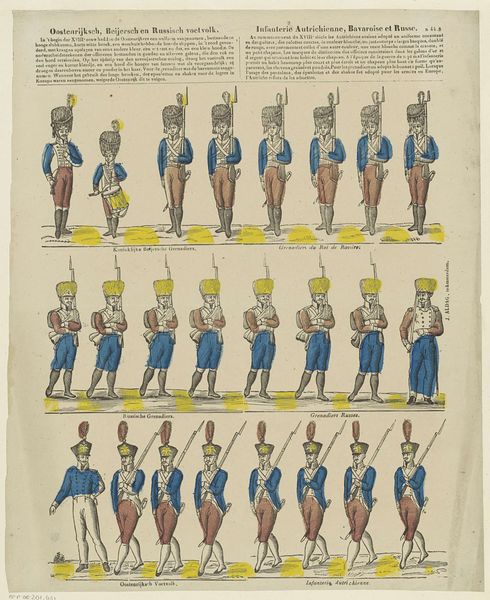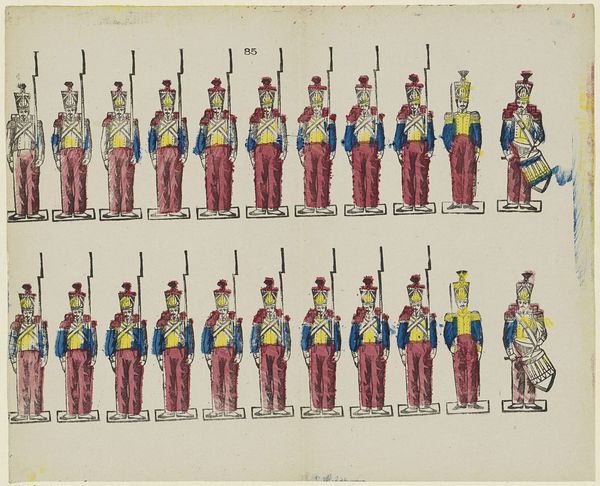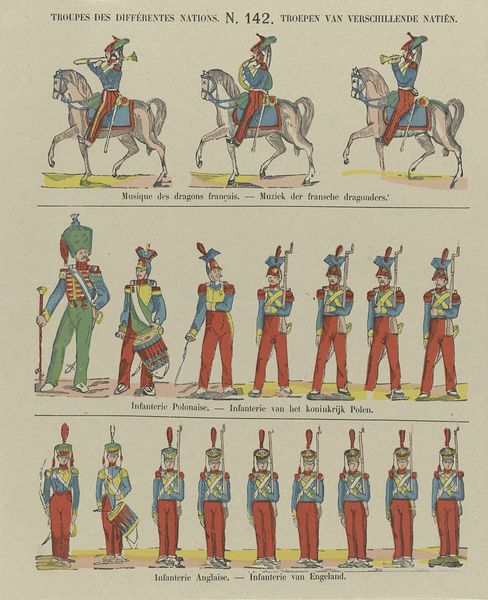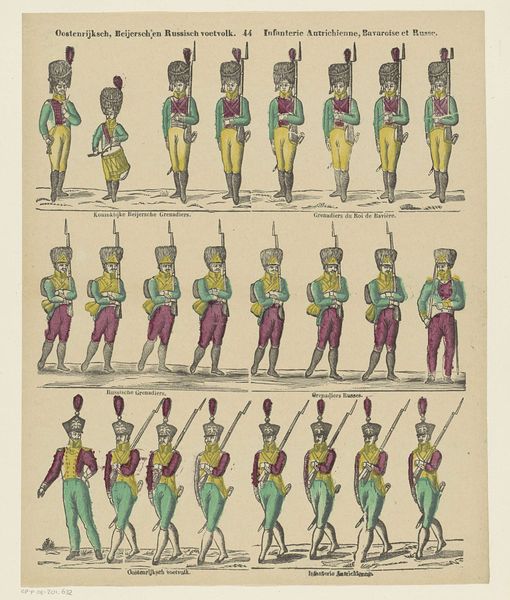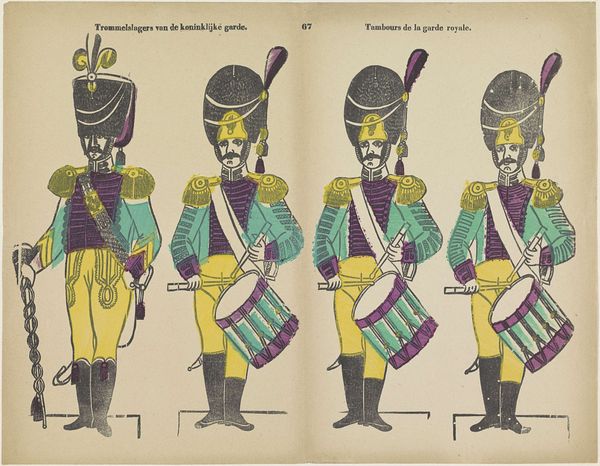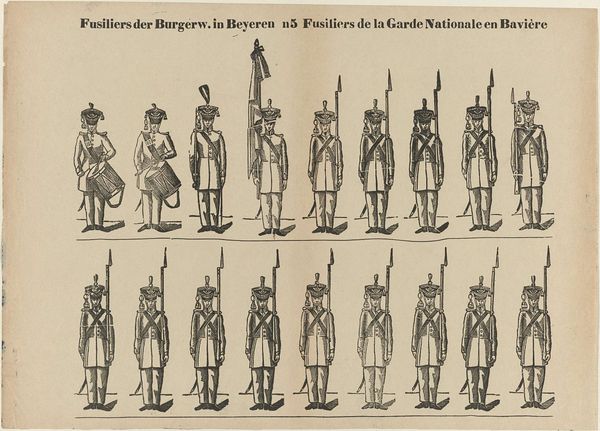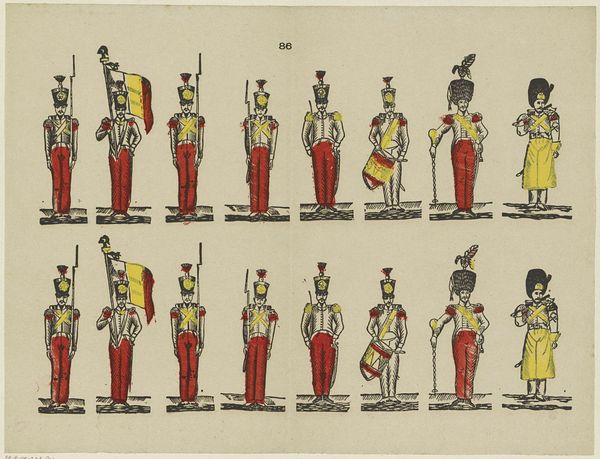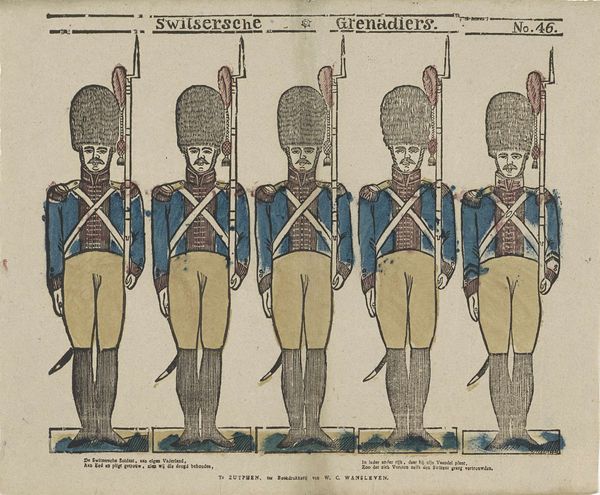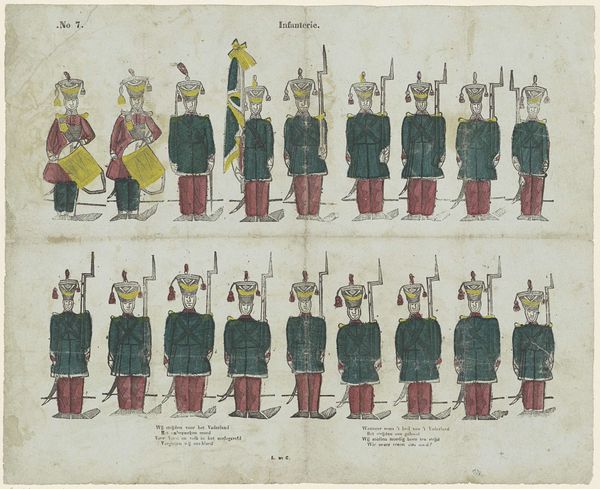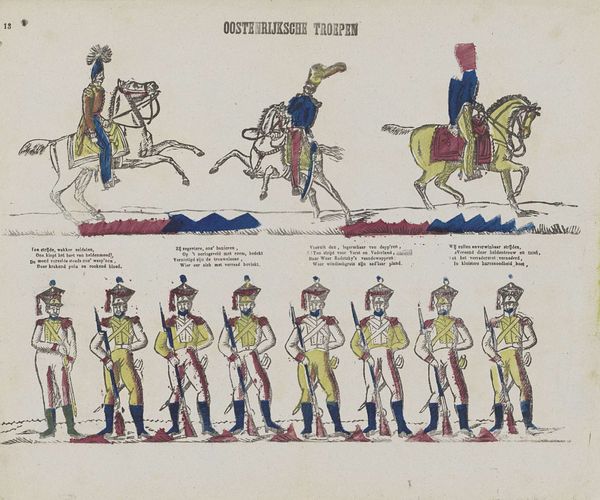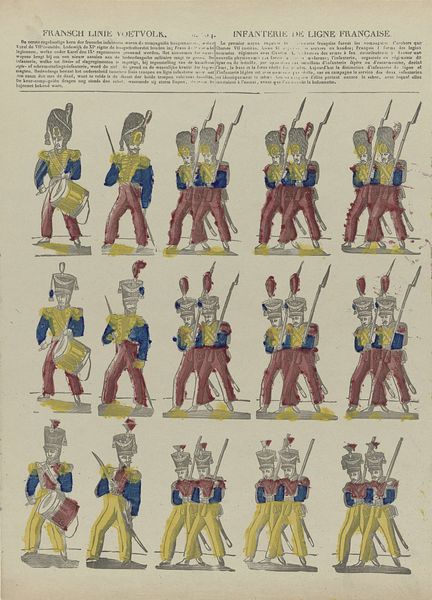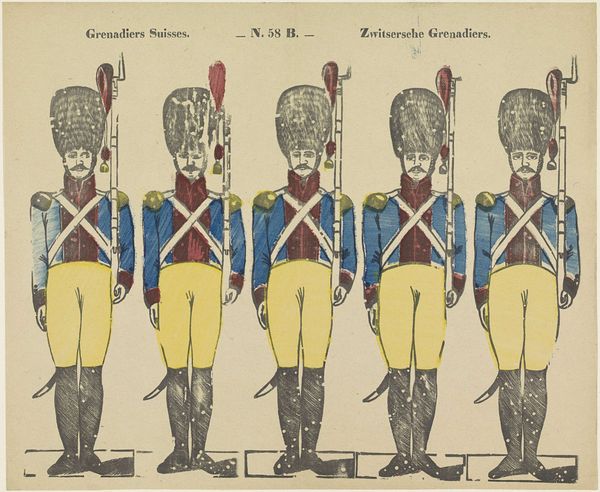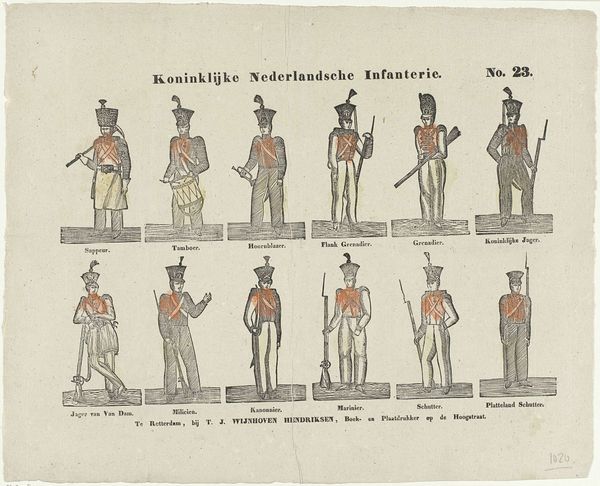
Fusiliers der burgerw. in Beyeren / Fusilliers de la garde nationale en Bavière 1833 - 1856
0:00
0:00
drawing, lithograph, print
#
portrait
#
drawing
#
lithograph
# print
#
figuration
#
line
#
genre-painting
#
history-painting
#
academic-art
#
realism
Dimensions: height 303 mm, width 418 mm
Copyright: Rijks Museum: Open Domain
Curator: What a fascinating piece of Bavarian military history! This lithograph, created sometime between 1833 and 1856 by Glenisson & Van Genechten, depicts fusiliers of the citizen guard. Editor: They look so orderly, almost like toy soldiers! The rigidity feels...oppressive. Is it intended to be celebratory, or is there a darker current? Curator: Well, considering the context, Bavaria was undergoing significant social and political shifts during this period. These citizen guards were often formed in response to unrest, suggesting a need for maintaining order in a time of change. Uniforms, even these brightly coloured ones, can represent the suppression of individual expression. Editor: Absolutely. The lithographic technique itself lends to the impression of uniformity. It reproduces identically over and over; look how similar all their poses are. But there’s also something to be said for the romanticism, a hint of nostalgia for a past era of uniformed order. Curator: I'm particularly struck by the attention to detail in the uniforms. Each element, from the plumes on their helmets to the distinct color-coding of their jackets, holds symbolic value. The green, for instance, evokes notions of civic virtue, of being a defender of the nation and its values. And then the yellow. Think about the association of that colour with royalty at that time. Editor: And that rigidity in the posture. There is a whole psychological narrative in there, how order can both reflect and reinforce hierarchy and potentially oppress dissenting voices. They're presented as archetypes more than individuals, their identity submerged within their function. Curator: Indeed. I read it not necessarily as pro-order, but more of a commentary on the *idea* of order, on civic duty and social position. The image serves as a fascinating archive of the social anxieties of mid-19th-century Bavaria. Editor: Right, which encourages us to be wary about the uncritical celebration of social structures and always be conscious of whose voices might be excluded in the process. Food for thought!
Comments
No comments
Be the first to comment and join the conversation on the ultimate creative platform.
